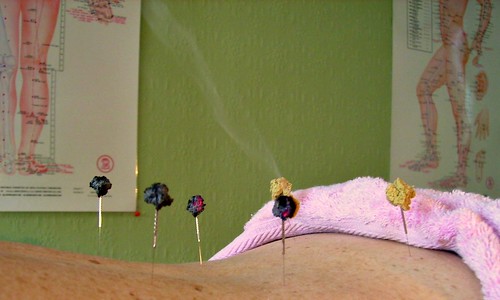Medical acupuncture is a type of an acupuncture modality that is practiced by a qualified medical health care practitioner like a chiropractor rather than by someone who is trained in traditional Chinese medicine or acupuncture. The principles of medical acupuncture are slightly different from those of traditional Chinese acupuncture or medicine.
However, its sole purpose is to stimulate the body’s natural healing abilities or to bring a patient’s body into balance so as improve its condition. It can be used as an alternative treatment option for a number of medical conditions, for example, stress, cancer and the likes and for pain management.
Can just about anyone perform this form of acupuncture?
This form of acupuncture cannot be practiced by just about anyone as it requires extensive training in both modern and traditional Chinese medicine. The practitioner must then receive a variety of training levels to full qualify to practice. In many places around the world, acupuncture classes for doctors are used to prepare people for certification and membership in professional organizations.
In other regions, qualified physicians take some acupuncture classes and start practicing without obtaining certification. Patients that are interested in medical acupuncture however should consult practitioners that belong to professional organizations or that can produce proof of being extensively trained in acupuncture practices and techniques.
Do both traditional and medical acupuncture target the same points during the treatment process?
Points along meridians of the body which act as channels for body’s natural energy are targeted by both the traditional and medical acupuncture. The practitioner identifies those areas in the body whose energy is out of balance and stimulates certain points to achieve harmony. The only major difference between medical and traditional acupuncture lies in how things are explained.
How does it work?
Medical acupuncture practitioners base their belief on results of studies that show how people respond to acupuncture, their knowledge of physiology and anatomy. Results are based on what happens in the body during acupuncture session. Practitioners accept that they are stimulating nerves in the body to trigger a release of chemicals in the brain and body to relief pain or to start natural biological processes which will improve the patient’s health. Some medical acupuncturists share the common belief with traditional acupuncture specialists that they are bringing the body’s energy into balance.
Where can you go for medical acupuncture?
Some specialized clinics and hospitals today are offering medical acupuncture as a treatment option. Patients can visit these medical facilities for medical acupuncture treatment sessions. They can also request medical acupuncture services from their regular physician if he is trained in this acupuncture modality. Some general medical practitioners have studied a number of alternative medical modalities, acupuncture included so as to provide an all round service to their patients. Best of all, pets don’t have to be left behind as some animal caregivers practise veterinary acupuncture in some regions of the world.
How do medical acupuncturists know where to put the needles?
Acupuncturists rely on their wide knowledge of body anatomy to decide where to place the needles in their patients. The knowledge incorporates an extensive assortment of traditional medical practices mainly used in Asia for centuries, teachings of long-established Chinese medicine, along with education which is specific to the acupuncture type being practiced. Because acupuncture is a complex discipline, potential practitioners study for many years to make sure that they will serve their patients effectively and safely while at it. Acupuncture in general is a very old medical discipline in Asia, and the earliest acupuncture text dates back to the 3rd century BCE.
The medical acupuncture treatment process
The first step in medical acupuncture treatment process is an interview, in which the practitioner discuses the patient’s main complaint. This allows the practitioner to assess the patient’s general attitude, health and nature. The physician then physically inspects the patient; usually utilizing the tool of tongue diagnosis to gain important clues about the general health of the lungs. A number of other diagnostic actions are carried out at this stage.
After the interview and physical examination, the practitioner is able to come up with a diagnosis. Like earlier mentioned, acupuncturists rely on a system of meridians, which are lines of energy that flow through the body. There are twelve major meridians and 8 minor ones. The acupuncturist place needles at different points in these meridians with an aim of freeing up energy. The released energy y helps the body to naturally heal itself. Each of the meridians is closely associated with specific organs in the body. Each organ is deemed responsible for different symptoms, which all can be treated with acupuncture at certain points.
Medical acupuncture specialists like the traditional acupuncturists utilize charts and well-known anatomical features to locate the meridians and acupuncture points, which run into thousands. Several hundreds of these points are commonly used by the medical acupuncturists in the treatment process.
If you are interested in giving medical acupuncture a try, contact us today and make an appointment to find out for yourself the benefits of this medical practice.

